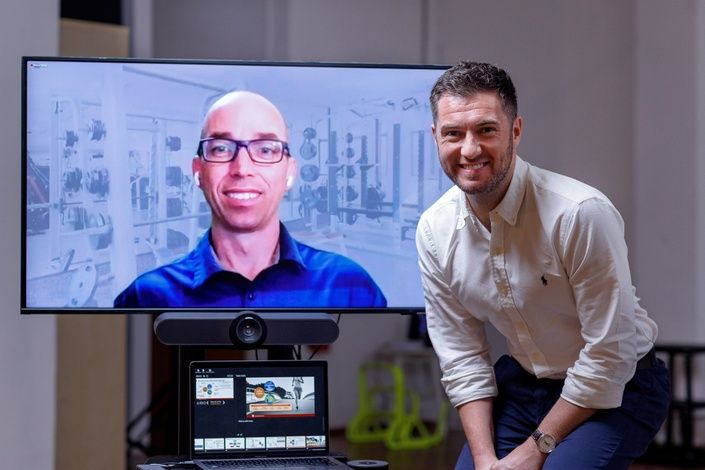Introduction
The Lower Limb Bone Stress Injury Masterclass, taught by Dr Stuart Warden and Dr Liam West, lays out a detailed overview of lower limb bone stress injuries (BSI), including an exploration of intricate topics such as Relative Energy Deficiency in Sport (RED-S) and how to return to running. This position statement provides clinically relevant, actionable information that may be useful to health professionals.
Part 1: Subjective Assessment and Background
A BSI is the consequence of the inability of bone tissue to withstand repetitive loading, resulting in structural fatigue, signs, and symptoms. Whilst the pathophysiology of the injury is not entirely known, we do know that a BSI ultimately comes down to two questions: a) what is the load on the bone? and b) what is the strength of the bone? We must seek to answer these questions by investigating their loading history including changes, location and pattern of symptoms, general health, and injury history.
- If you are suspecting a BSI, it's important to go back at least 3-4 weeks to identify the stimulus or cause of injury.
- When we see someone with a BSI, we have to ask a) do they have a skeletal issue (i.e., are their bones weak / not well adapted?) b) do they have a loading issue (i.e., have they had a spike in their training?) or c) a combination of both.
- It's important to ask about and be aware of questions pertaining to REDS (e.g., absent, or irregular menstrual cycles, changes in gastrointestinal function, low BMI, chronic fatigue) not just when someone has a BSI, as you may help to prevent future injury.
- We should encourage kids to not specialise in one sport too early, as playing a variety of sports and activities leads to more robust, stronger, bigger bones which potentially lower the risk of a BSI.
Part 2: Objective Assessment and Imaging
Once the subjective history is collected, a thorough objective exam should include palpation of relevant areas, loading tests such as hopping, specific bone loading tests as a calcaneal squeeze test when suspecting a calcaneal BSI, and imaging if required.
- Cardinal signs of a BSI include a) localised bone pain, which is b) aggravated by loading and c) does not warm up.
- A scan should be ordered, (usually an MRI) If you are suspecting a high risk BSI (including the navicular, femoral neck, or proximal diaphysis of the 5th metatarsal) and if you think it will change your management of the injury.
- We must always treat the individual based on their symptoms, not on their scan.
Masterclass Preview
Press PLAY to watch this FREE PREVIEW of Stuart Warden talking about training around the lower limb bone stress injury
Part 3: Management
Management of BSI can be tricky but should start with deloading the athlete to an appropriate level, guided by their symptoms. Whilst doing so, it is a great opportunity to address the kinetic chain by incorporating symptom-free core, gluteal or upper body work, whilst trying to maintain their fitness via cycling or deep water running when appropriate. As the athlete slowly re-introduces load, physiotherapist should be aware to differentiate between reloading “awareness” vs true discomfort or pain to not slow their progress.
- Early management of a BSI will change depending on the location; for high risk BSIs, an early surgical opinion should be considered alongside non weight bearing immobilisation.
- Treatment of BSI should be symptom based; we generally don't want any pain during activity or exercise. If they have resting pain, pain on walking or pain at night, deload them. If they don’t have any pain, slowly progress.
- When returning to running, increase duration before intensity; high intensity loads bone more than a longer duration of running.
- Bones become “deaf” to loading quite quickly; short bouts of loading are best to allow bone to become resensitised before loading again so that they continue to recover and adapt.
Part 4: Prevention
Historically, BSI prevention has merely focussed on managing the total distance ran by the athlete or the length of their session, but we now know that we must consider bone ‘workload’ which encompasses both the number of loading cycles (such as distance or time), but also the magnitude or rate of loading (such as intensity or RPE).
This equation should also consider more subtle changes in intensity, such as the running environment (e.g., grass vs concrete), level of incline or decline, and speed.
- In order to prevent future BSI, we need to either a) build bigger, stronger bone or b) reduce bone loads.
- Increasing running cadence (steps per minute) is an effective way to reduce bone load, overstriding and muscle forces, and can help prevent BSI.
- BSI prevention goes beyond pure physical load; we must also ensure that the athlete’s diet, sleep, and psychological wellbeing are optimised as these can significantly impact the risk of a BSI.


